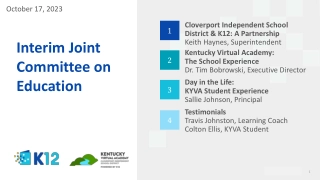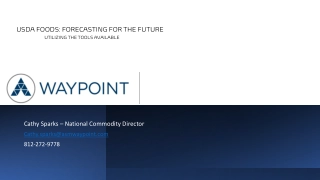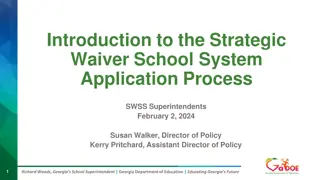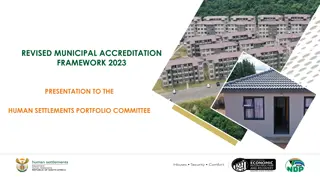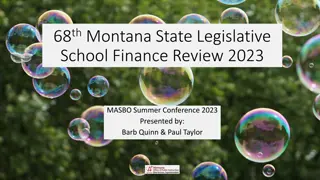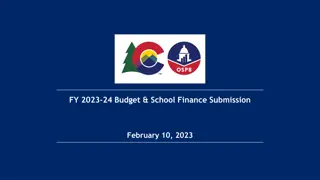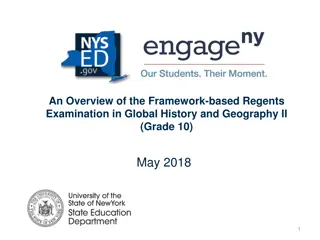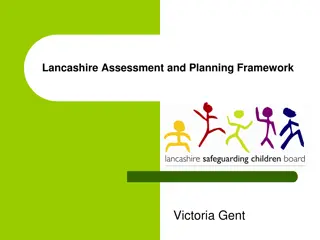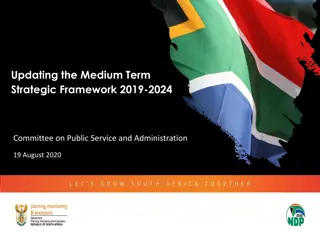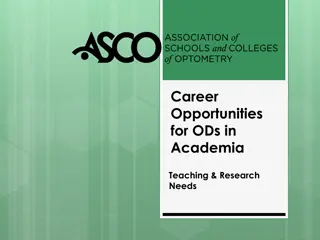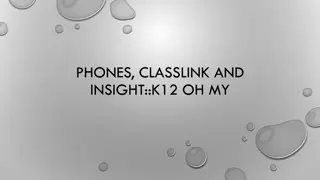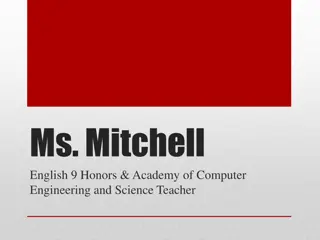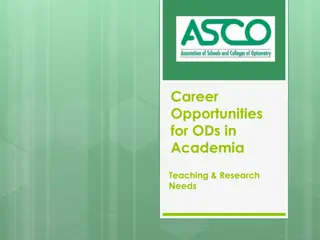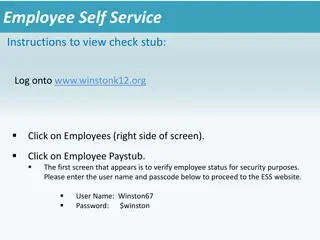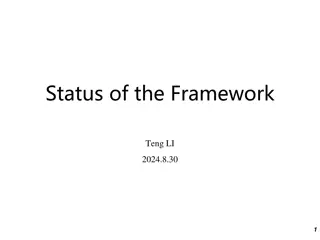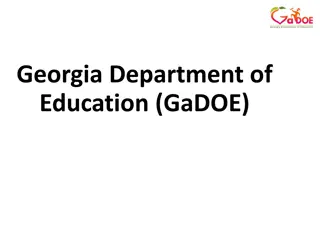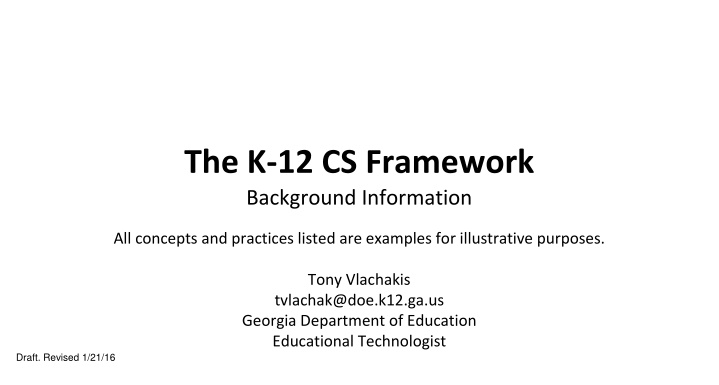
The K-12 Computer Science Framework
Explore the K-12 Computer Science Framework developed by ACM, CSTA, and Code.org to empower students with essential CS concepts and practices. Learn about the vision, principles, and implementation of the framework in educational settings.
Download Presentation

Please find below an Image/Link to download the presentation.
The content on the website is provided AS IS for your information and personal use only. It may not be sold, licensed, or shared on other websites without obtaining consent from the author. If you encounter any issues during the download, it is possible that the publisher has removed the file from their server.
You are allowed to download the files provided on this website for personal or commercial use, subject to the condition that they are used lawfully. All files are the property of their respective owners.
The content on the website is provided AS IS for your information and personal use only. It may not be sold, licensed, or shared on other websites without obtaining consent from the author.
E N D
Presentation Transcript
The K-12 CS Framework Background Information All concepts and practices listed are examples for illustrative purposes. Tony Vlachakis tvlachak@doe.k12.ga.us Georgia Department of Education Educational Technologist Draft. Revised 1/21/16
Objectives Participants will be able to: 1.Describe the purpose and structure of the framework. 2.Describe the relationships between the framework and standards. 3.Describe the framework s background and development timeline. 4.Review the framework
Vision The ACM, CSTA, and Code.org are creating a high-level framework of computer science concepts and practices that will empower students to be informed citizens who can critically engage in public discussion on CS-related topics develop as learners, users, and creators of CS knowledge and artifacts better understand the role of computing in the world around them learn, perform, and express themselves in other subjects and interests
Framework Principles 1. Less is more 2. Don t reinvent the wheel 3. Research-backed and Research-forward 4. Align to national structure and process norms 5. A step towards something more 6. Broaden participation
Envisioning the framework: Powerful ideas, simply explained. Concepts (~knowledge) Practices (~skills) Computing Devices and Systems Programs and Algorithms Develop Abstractions Create Computational Artifacts Core Concept Core Practice . . Framework By the end of 2nd grade... Powerful idea statements By the end of 2nd grade... Powerful practice statements Concepts Practices 5th grade 5th grade ... ... How do you use the concepts and practices to create standards? How is CS implemented in schools and districts? What models work? How do you prepare teachers to teach a K-12 CS pathway? etc... Guidance 16
What is a concept? Concept (know) o A big idea or theme that can be used as a heading for key concepts in computer science. o These concepts are not discrete and will overlap with one another. They are listed separately in order to organize the K-12 body of knowledge.
What is a practice? Practice (do) Captures important behaviors that computer scientists engage in o Required to fully explore and understand the concepts o Helps students coordinate and make sense of knowledge to accomplish a goal or task o Enables students to engage with the course content by developing artifacts o Rest on important processes and proficiencies with importance in CS. o
Rubric for concepts and practices Broad importance across CS o Are these important for all students? o Can students engage in this concept with one or more of the practices? o Can students engage in this practice with one or more of the concept areas? Relevant to teachers and students - How accessible and relevant are the concepts/practices? Connects with other disciplines practices: similarities and complementation in Math and Science. Low threshold, high ceiling o Can students engage with these K-12? Can it be broken down into smaller level concept/practice statements and approached with increasing sophistication? A useful tool - intellectually constructive Future proof
Concepts and Practices (draft) Concepts: 1. Computing Devices and Systems 2. Networks and Communication 3. Data and Information 4. Programs and Algorithms 5. Impact and Culture Practices: 1. Recognizing and representing computational problems 2. Developing Abstractions 3. Creating Computational Artifacts 4. Testing and Iteratively refining 5. Participating in an inclusive computing culture 6. Communicating About Computing 7. Collaborating with computing 16
Example concept statements Computers take input (directions) and follow the specific set of inputs exactly as given to produce an output... Concepts (~content) Data and Information Programs and Algorithms ... Computing Devices and Systems Algorithms are at the heart of computing, combining data and control to create the directions for how to complete a task. There are often many different algorithms to solve the same problem. By the end of 2nd grade... Statement 1 ... Statement 2 5th grade 8th grade Data often needs to be transformed from its raw state to be easily understood. Data can be transformed through mathematical expressions, aggregation (sum/average of rows/columns), rearrangement, and visualization. The type of transformation can influence the people who view the data. 12th grade Statement 3 16
Example practice statements Practices (~skills) Decompose a procedure into simpler tasks... ... Creating Computational Artifacts Collaboration Abstraction By the end of 2nd grade Statement 1 Recognize patterns to generalize a solution... Statement 2 ... 5th grade Collaborate with others online and asynchronously... 8th grade 12th grade Statement 3 16
Sources, NRC Science Framework and NGSS Inputs and Precedent
Inputs into the K-12 CS framework Research International standards (e.g., UK programme of study) CSTA 2011 standards ACM CS 2013 (higher ed body of knowledge) ISTE/CSTA Computational Thinking Kit AP CS Principles course framework Math and Science frameworks and standards
NRC Framework statements led to NGSS standards An NGSS Standard: 3-5-ETS1-1. Define a simple design problem reflecting a need or a want that includes specified criteria for success and constraints on materials, time, or cost. NRC K-12 Science Framework Statements: Define a simple design problem... Define a simple design problem that can be solved through the development of an object, tool, process, or system and includes several criteria for success and constraints on materials, time, or cost. ...reflecting a need or a want People s needs and wants change over time, as do their demands for new and improved technologies. ...that includes specified criteria for success and constraints on materials, time, or cost. Possible solutions to a problem are limited by available materials and resources (constraints). The success of a designed solution is determined by considering the desired features of a solution (criteria). Different proposals for solutions can be compared on the basis of how well each one meets the specified criteria for success or how well each takes the constraints into account.
Relationship between the Framework and Standards
Concept + Practice = Standard Concept Practice Standard Programming and Algorithms By the end of 2ndgrade Collaboration By the end of 2ndgrade... Programming and Algorithms (1st grade) A program can be created by selecting instructions from a set of commands and inputting them into a computer as a sequence. Work cooperatively and collaboratively with peers, teachers, and others using technology. Work collaboratively in clear roles (e.g., pair programming) to construct a problem solution consisting of a sequence of programming commands (e.g., block- based).
Concept + Practice = Standard Concepts (~knowledge) Practices (~skills) Computing Devices and Systems Networks and Communication ... Creating computational artifacts Develop Abstractions ... ... . Framework By the end of 2nd grade... By the end of 2nd grade... statement statement .... ... Develop Abstractions Standards Computing Devices and Systems CDS.K.1 Identify different forms of computing devices (such as smartphone, laptop, desktop, game console, etc.) as hardware. Explanation: The idea of a computer is separate from its physical appearance. (Develop abstractions) 16
Example Standards (performance expectations) Computing Devices and Systems Networks and Communication Data and Information Programs and Algorithms Impact and Culture ... ... ... ... K CDS.K.1 Identify different forms of computing devices (such as smartphone, laptop, desktop, game console, etc.) as examples of hardware. Explanation: The idea of a computer is separate from its physical appearance. (Develop abstractions) 1 2 3 4 etc...
From one concept or practice, multiple standards Concepts (~knowledge) Practices (~skills) ... ... ... Programs and Algorithms . Recognizing and representing computational problems Framework By the end of 2nd grade... An algorithm uses different types of instructions to solve a problem or perform a task. By the end of 2nd grade... Express problems and solutions so a computer can execute the instructions. A program can be created by selecting instructions from a set of commands and inputting them into a computer as a sequence. ... CPP.L1:3.4 Construct a set of statements to be acted out to accomplish a simple task (e.g., turtle instructions) CPP.L1:6.6 Implement problem solutions using a block-based programming language. CT.L1:6.2 Develop a simple understanding of an algorithm (e.g., search, sequence of events, or sorting) using computer-free exercises. Standards CT.L1:3.4 Recognize that software is created to control computer operations CPP.L1:6.5 Construct a program as a set of step-by- step instructions to be acted out (e.g., make a peanut butter and jelly sandwich activity) 16
The Framework is not standards Concepts and practices are not as prescriptive or measurable as performance standards. They do not address individual grade level granularity (instead they address grade bands). There are much fewer statements in the framework than in a standards document. The focus of the framework is a minimum set of concepts and practices that form a baseline literacy in CS. To create standards, a state would combine concepts and practices into measurable performance standards and enact as policy statements. 16
Concepts, Practices, and Standards Concepts Practices Standards Concepts are what a student should UNDERSTAND or know. A practice is a WAY of doing things: a computer scientist decomposes problems as part of doing design. Standards reflect what a student should know and be able to do. Baseline level of competency in CS exiting 2nd, 5th, 8th, and 12thgrade. General, high-level, core content expectations. Address high-level transferable knowledge and CS as a literacy for all students Describe student performance expectations based on combination of concepts and practices. Grade-by-grade granularity Specific, measurable, describe explicit level of rigor Students can t fully understand the core concepts without engaging in these practices. Similarly, students can t develop or demonstrate growth in these practices without the context of core concepts. A learning progression for practices describes how to develop these practices in the major areas of CS.
What the framework is for The framework of concepts and practices will inform the development of ______________ by _____________. (pick one) standards curriculum professional development (pick one) states districts orgs (ex: CSTA)
Who creates what ACM, Code.org, and CSTA are convening stakeholders to create a framework of concepts and practices, which will inform the development of standards by the CSTA and states. ACM + Code.org + CSTA + states + community Concepts and Practices Standards CSTA and states involved in convenings develop standards Alternative view
Whos involved in the framework? Steering committee - ACM, CSTA, Code.org, & 2 more that will be announced 26 Writers diversified by: gender - 13 men, 13 women grade band experiences - 15 ES, 10 MS, 17 HS, 12 Higher ed role - 8 current teachers, 9 state/district, 8 research/higher ed, 1 non-profit state - each lead state contributed a writer Note: Diversity built into the structure and review of the framework
Stakeholders Reviewers - review drafts, attend focus groups, public comment Thought Leaders - researchers, teachers, practitioners Writers - diversified by grade band, expertise, role, state, race, gender States/Districts - 11 states, 4 districts Industry - Google, Microsoft, Apple, Infosys, etc... Orgs - CSTA, ISTE, PLTW , MassCAN, CSNYC, ACCESS, etc...
Timeline November 2015 Draft high-level structure - 5 core concepts, 7 core practices Feb 3-17 Public review of 9-12 grade band concept and practice statements Mar 14 - Apr 1 Public review of K-12 grade band concept and practice statements June Release on K12cs.org Review kits will be released at the beginning of each review period and will be available at k12cs.org
Review Process (what happens with feedback?) 1. The public review period launches with an email, webinar, and release of a review kit on k12cs.org, including a published draft of the framework. 2. Individual and group reviews take place during the review period. 3. Reviewers submit their feedback as raw notes and summaries in an online form. 4. Development team preps the feedback for the writers by analyzing the input for significant themes and shares overarching guidance based off the feedback. 5. Writers read all of the feedback and summarize their response to specific feedback. 6. All major feedback themes and writer responses, including quoted examples of feedback and responses, are summarized in an appendix doc that is included in the release of the framework.
Review Process In conducting your review, you don t have to review everything. Provide feedback based on your expertise and time. Read the released draft, following the guidance in the online review form, and submit your feedback through the same form. Online Review Form https://form.jotform.com/60316858449970 Review Draft https://k12csdotorg.files.wordpress.com/2016/01/k-12-cs-framework-9-12-grade- band-draft.pdf
Questions? Email: Tony Vlachakis tvlachak@doe.k12.ga.us

